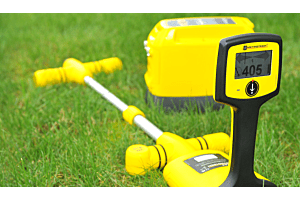
The importance of accurately locating streetlighting cables cannot be overstated. Whether you're involved in construction, excavation, or utility management, knowing the precise location of these cables with a CAT and Genny is crucial for safety and efficiency. This guide will introduce you to the C.A.T4 Cable Avoidance Tool, a safety-critical precision instrument designed to make this task easier and more accurate.
Overview of the C.A.T4 Cable Avoidance Tool
Features and Functionalities
The C.A.T4 Cable Avoidance Tool comes with a high-visibility display, dynamic overload protection, and a range of other features that make it an industry leader. Its high contrast and innovative eCert technology ensure that you have all the critical information you need at your fingertips.
Understanding the Display and Controls
The C.A.T4 tool offers a user-friendly interface with easy-to-understand controls. The high-visibility display ensures that you can read the screen even in challenging light conditions, making it a versatile tool for any environment.
Preparing for Cable Location
Safety Precautions and Guidelines
Before you begin, it's essential to follow all safety guidelines. Always use the C.A.T4 tool to scan the intended excavation area to avoid hitting any underground utilities.
Checking the Tool and Accessories
Ensure that all accessories, including the Genny signal leads, are in proper working condition. A thorough test of key circuitry elements is recommended before starting the cable location process.
How to Detect and Locate Street Lighting Cables Safely and Accurately
Preparing Your Tools
- Understand Your Genny Tool Tray: As standard, your Genny tool tray contains direct connection leads. These leads are crucial for applying a Genny signal to help you identify and locate a specific target line or utility, such as a street light cable.
- Insert the Direct Connection Plug: Insert the direct connection plug into the accessory socket on the Genny.
- Note: For your safety, do not turn on the Genny until you're ready to apply the signal.
Making the Connection
- Attach the Red Clip: The direct connection lead's red clip can be attached to a metal conductor, such as a streetlight.
- Alternative Methods:
- If you can't clip directly to the streetlight, use the magnet accessory where metal is visible.
- If no metal is visible, use the wrapped method with the red direct connection cable. Wrap as much of the cable as possible around the structure.
Earthing the Signal
- Use the CAT Scanner: Before inserting the earth stake into the ground, use the CAT to scan the ground to avoid hitting any shallow cables.
- Insert the Earth Stake: Once it's safe, insert the earth stake into the ground.
- Attach the Black Clip: Attach the direct connection lead's black clip to the earth stake.
- Note: Try to earth the signal away from the streetlight and use moist or wet ground for the earth stake to improve the Genny signal.
- Earth Extension Lead: If there's no suitable ground nearby, an earth extension lead accessory can be used to earth a stake further away from the Genny.
- Alternative Earthing Method: If no suitable ground is available, you can earth the signal by clipping the black lead onto a nearby drain cover.
Powering the Unit
- Turn On the Unit: Momentarily press the on/off button to power on the unit. The unit will power on in standard output level and maximum volume.
- Adjust Volume: If you wish to reduce the volume, use a sustained press on the on/off button when powering on the unit.
- Boost Mode: The boost button can be used to apply a stronger signal to the streetlight. In boost mode, the LED will be permanently delayed to indicate maximum output.
- Note: If the LED is flashing, this indicates that the Genny's batteries are low, which may affect the signal output.
Tracing the Signal
- Trace the Signal: You can now trace the Genny signal on the street light cable.
Additional Information
- Refer to the User Manual: For more detailed information on how to use radio detection products, always refer to the user manual.
By following these steps, you'll be better equipped to detect and locate street lighting cables safely and accurately.






Login and Registration Form